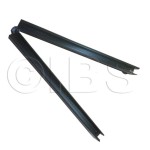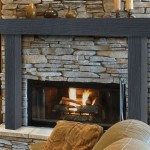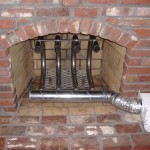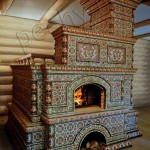How to Use a Gas Fireplace Safely and Efficiently
Gas fireplaces offer a convenient and aesthetically pleasing alternative to traditional wood-burning fireplaces. They provide instant warmth and ambiance with the flip of a switch or the press of a button. However, understanding the operation and maintenance of a gas fireplace is crucial for both safety and optimal performance. This article details the necessary steps for using a gas fireplace correctly and effectively.
Before operating any gas fireplace, it is imperative to familiarize oneself with the specific model's user manual. While the general principles remain consistent, specific features, safety precautions, and maintenance procedures can vary significantly between different brands and models. Always consult the manual first and adhere to its instructions.
Understanding the Components of a Gas Fireplace
A gas fireplace typically comprises several key components that work together to provide heat and create a realistic flame effect. These components include the gas valve, pilot light (or electronic ignition system), burner, logs or decorative elements, and a vent or chimney system. The gas valve controls the flow of natural gas or propane to the burner. The pilot light, or electronic ignition system, ignites the gas, creating a flame. The burner distributes the gas for combustion, and the logs or decorative elements add a visual appeal. The vent or chimney system removes combustion byproducts safely from the home.
The gas valve is a critical safety component. It is generally equipped with a safety shut-off mechanism that will cut off the gas supply if the pilot light is extinguished or if there is a malfunction. The pilot light, a small continuous flame, serves as the ignition source for the main burner. Some newer models use electronic ignition systems, which eliminate the need for a continuous pilot light and ignite the burner on demand. These systems are often more energy-efficient.
The burner is designed to distribute gas evenly for efficient and complete combustion. It is essential to keep the burner clean and free of debris to ensure proper operation and prevent the buildup of carbon monoxide. The logs or decorative elements are made of ceramic or other heat-resistant materials and are designed to mimic the appearance of real wood logs burning in a traditional fireplace. These components should be arranged according to the manufacturer's instructions to ensure proper airflow and prevent interference with the burner.
The vent or chimney system is designed to remove combustion byproducts, such as carbon monoxide, carbon dioxide, and water vapor, from the home. There are two main types of venting systems: direct vent and B-vent. Direct vent systems draw combustion air from outside the home and exhaust combustion gases directly outside through a sealed system. B-vent systems draw combustion air from inside the home and exhaust combustion gases through a chimney or flue.
Starting a Gas Fireplace with a Pilot Light
The following steps outline the procedure for starting a gas fireplace with a pilot light. First, locate the gas valve, typically found behind a control panel or access door near the fireplace. Turn the gas valve knob to the "Pilot" position. This allows gas to flow to the pilot light.
Next, depress the gas valve knob and hold it down while simultaneously pressing the igniter button. The igniter button creates a spark that should ignite the pilot light. Continue holding the gas valve knob down for approximately 20-30 seconds after the pilot light ignites. This allows the thermocouple, a heat-sensitive device, to warm up. The thermocouple is responsible for keeping the gas valve open once the pilot light is established.
If the pilot light does not ignite after several attempts, release the gas valve knob and wait for a few minutes to allow any accumulated gas to dissipate. Repeat the ignition process. If the pilot light still fails to ignite, consult the user manual or contact a qualified technician. Do not attempt to modify or repair the gas valve or ignition system.
Once the pilot light is lit and the thermocouple is sufficiently warmed, release the gas valve knob. The pilot light should remain lit. If the pilot light goes out after releasing the knob, the thermocouple may be faulty and require replacement. If the pilot light stays lit, turn the gas valve knob to the "On" position to activate the main burner. The burner should ignite immediately, producing a flame. Adjust the flame height using the control knob or remote control to achieve the desired level of heat and ambiance.
If the main burner does not ignite after turning the gas valve knob to the "On" position, check the gas supply to ensure it is turned on and that there are no apparent leaks. If the gas supply is adequate and the burner still fails to ignite, consult the user manual or contact a qualified technician. Never attempt to force the burner to ignite or modify the gas valve or burner components.
Operating a Gas Fireplace with Electronic Ignition
Gas fireplaces with electronic ignition systems offer a more convenient and energy-efficient alternative to pilot light systems. These systems ignite the main burner on demand, eliminating the need for a continuous pilot light. To start a gas fireplace with electronic ignition, locate the power switch or remote control. Turn on the power switch or press the "On" button on the remote control.
The electronic ignition system will typically activate the igniter, which creates a spark that ignites the main burner. The burner should ignite immediately, producing a flame. Adjust the flame height using the control knob or remote control to achieve the desired level of heat and ambiance. Some electronic ignition systems also include a fan that circulates warm air into the room. The fan speed can usually be adjusted using a separate control knob or remote control button.
If the main burner does not ignite after turning on the power switch or pressing the "On" button on the remote control, check the power supply to ensure it is turned on and that the batteries in the remote control are fresh. If the power supply is adequate and the burner still fails to ignite, consult the user manual or contact a qualified technician. Do not attempt to modify or repair the electronic ignition system.
Electronic ignition systems are generally equipped with safety features that will shut off the gas supply if the burner fails to ignite or if there is a malfunction. These safety features are designed to prevent the buildup of gas and reduce the risk of explosion.
When finished using the fireplace, turn off the power switch or press the "Off" button on the remote control. The burner should extinguish immediately. If the fireplace has a fan, it may continue to run for a few minutes after the burner is extinguished to dissipate residual heat.
It is essential to periodically check the batteries in the remote control and replace them as needed to ensure proper operation of the electronic ignition system. Also, clean the area around the fireplace to prevent dust and debris from accumulating and interfering with the ignition system. Regular maintenance will ensure the safe and efficient operation of the gas fireplace.
Maintaining a Gas Fireplace for Safety and Efficiency
Regular maintenance is crucial for ensuring the safe and efficient operation of a gas fireplace. Neglecting maintenance can lead to safety hazards, reduced heating efficiency, and costly repairs. One of the most important maintenance tasks is to inspect the fireplace regularly for any signs of damage, wear, or corrosion. Check the logs or decorative elements for cracks or chips and replace them if necessary. Inspect the burner for any signs of rust or corrosion and clean it regularly to remove any debris that may have accumulated.
The vent or chimney system should be inspected annually by a qualified technician to ensure it is clear of obstructions and functioning properly. Obstructions in the vent or chimney system can prevent the proper venting of combustion gases, leading to the buildup of carbon monoxide inside the home. Carbon monoxide is a colorless, odorless gas that can be deadly. It is essential to have a carbon monoxide detector installed in the home and to test it regularly to ensure it is functioning correctly.
The gas valve and ignition system should also be inspected regularly by a qualified technician to ensure they are functioning properly. The technician can check for gas leaks and test the safety shut-off mechanisms to ensure they are working correctly. It is essential to address any gas leaks immediately to prevent the risk of explosion or fire.
Clean the glass front of the fireplace regularly to remove any soot or dirt that may have accumulated. Use a glass cleaner specifically designed for fireplace glass. Avoid using abrasive cleaners or scouring pads, as these can scratch the glass. Clean the area around the fireplace regularly to prevent dust and debris from accumulating. Dust and debris can clog the burner and vent system, reducing efficiency and increasing the risk of fire.
When cleaning the fireplace, always turn off the gas supply and allow the fireplace to cool completely before starting. Never use water or other liquids to clean the burner or gas valve. Use a soft brush or vacuum cleaner to remove any debris from the burner. Keep combustible materials, such as curtains, furniture, and paper, away from the fireplace. These materials can ignite if they come into contact with the hot surface of the fireplace.
If any unusual odors or noises are noticed while operating the gas fireplace, turn off the gas supply immediately and contact a qualified technician. Unusual odors or noises can indicate a gas leak or other malfunction. Do not attempt to diagnose or repair the problem yourself. Always consult a qualified technician for any repairs or maintenance work on a gas fireplace.

Workings Of A Fireplace Royal Oak Mi Fireside Hearth Home
Understanding How Direct Vent Works Heat Glo

How Gas Fireplaces Logs Work At Gasfireplaces Org

Gas Fireplace Operation How Do They Work Early Times

What You Need To Know About Gas Fireplace Logs Fireplaces Direct Learning Center

3 Ways To Light A Gas Fireplace Wikihow

How Does A Gas Fireplace Work

Gas Fireplace Operation How Do They Work Early Times

Reasons Your Gas Fireplace Isn T Working Experts

The Dos And Don Ts Of Owning A Gas Fireplace Jacksonville Fl
Related Posts








